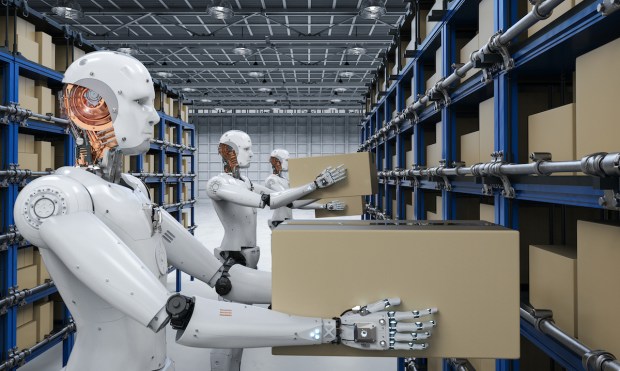Training Robots Using Video Games Could Democratize Warehouse Automation

Human-like robots occupy a particular niche in the American, as well as the global, psyche.
After all, from comic books to Hollywood scripts, robots — both friend and foe — have anchored fictional works solidly in the realm of the future and the fantastic.
And while today companies from Ocado to Amazon and beyond are exploring and increasingly using autonomous and automated solutions within the realm of fulfilment operations, the reality is that building and deploying safe and reliable robotic systems is still hard and very expensive.
A major pain point for firms looking to integrate warehouse automation is that it frequently entails investing in a ground-up redesign of their current facility and the construction of an all-new technical architecture to support the robotic fulfillment solutions.
Complicating matters is that those same facilities are often leased, not owned, on an industry-standard three-to-five-year term, which rather cramps the ROI horizon for an automation initiative.
That’s why humanoid robots capable of being dropped into an existing fulfillment process represent an opportunity. They don’t require a warehouse redesign to drive efficiencies by augmenting and accelerating product sorting, retrieval and distribution workflows — but they do need to be trained. And that has historically been an unavoidable obstacle to their development and adoption.
This, as Google DeepMind’s researchers are pioneering techniques for advancing the field of robotics, including how future robots could learn new tasks by watching video tutorials such as simple, task-centric video games.
Read more: Humanoid Robots Take Heavy Lift Out of Warehouse Automation
What It Will Take to Operationalize Robots at Scale
Announced last month (Feb. 23), Google’s Genie is described as “the first generative interactive environment trained in an unsupervised manner from unlabelled Internet videos.”
Per the company’s blog post, the Genie model was able to learn what actions a robot arm was capable of performing in order to manipulate objects, as well as how to control it, simply by watching videos of the same real robot arm in action. The implication, the team noted, is that future robots could be able to learn new tasks by watching video tutorials.
Among other future-fit use cases the researchers cited, robots could have their central machine learning (ML) and artificial intelligence (AI) platforms coded like video games enabling the robots to be taught to move through 3D space and accomplish various tasks.
“AI can better enable robots to better understand their environments, allowing them to better detect objects and people they come across,” Sarah Sebo, an assistant professor of computer science at the University of Chicago, where she directs the Human-Robot Interaction (HRI) Lab, told PYMNTS in an interview.
This approach to training could be particularly valuable within an unstructured fulfilment or warehouse distribution environment — and it works particularly well with humanoid, bipedal robot systems.
As reported last Monday (March 4), Amazon is already deploying a humanoid device called Digit, created by a company called Agility Robotics, to move bins in one of its warehouses.
The company also said recently (Feb. 28) that its Innovation Fund is ramping up its investment in robotics.
Read more: Excitement and Money Flows to Intersection of AI and Robotics
Making It Easy for Fulfilment Robots to Make Things Easier
While industrial and stationary robots have been around for decades, artificial intelligence (AI) could let them move about more freely. AI enables robots to do more than just remember a preprogrammed routine, Erik Nieves, CEO and co-founder of Plus One Robotics, an AI-vision software solution for robotic parcel handling, told PYMNTS in an interview. Using AI, robots can detect changes in their surroundings and use algorithms to make decisions on the fly.
“One of the keys to this accomplishment is 3D sensor technologies that enable robots to understand their environment much more deeply,” Nieves said. “Now, robots aren’t just operating in a predictable use case; with minimal guidance, they can intelligently see and adapt to novel situations.”
The opportunity area is massive. Only about 10% to 15% of warehouses have mechanized at least some of their processes, Akash Gupta, CEO of GreyOrange, told PYMNTS in January, meaning that the lion’s share of fulfilment optimization has yet to be captured.
